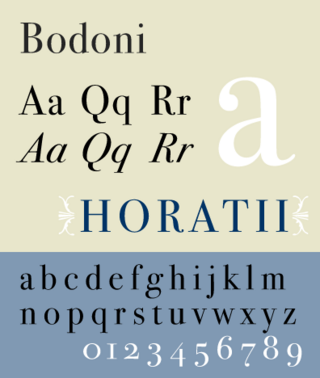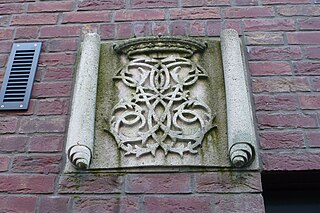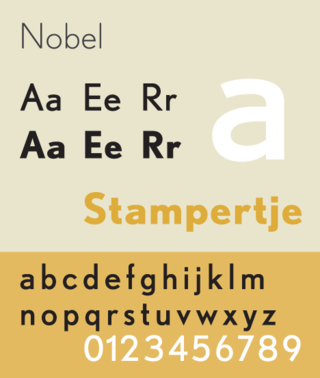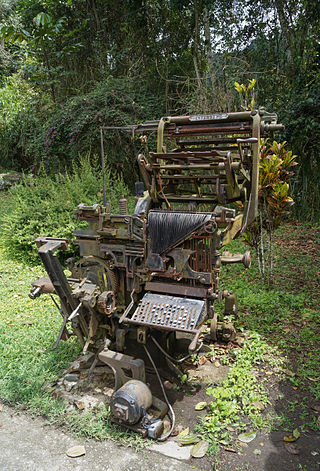Native name | Lettergieterij Amsterdam |
|---|---|
| Industry | Type foundry |
| Founded | 1851 |
| Founder | Nicolaas Tetterode |
| Headquarters | , |

The Amsterdam Type Foundry (Dutch : Lettergieterij Amsterdam) was a type foundry based in Amsterdam, Netherlands.
Native name | Lettergieterij Amsterdam |
|---|---|
| Industry | Type foundry |
| Founded | 1851 |
| Founder | Nicolaas Tetterode |
| Headquarters | , |

The Amsterdam Type Foundry (Dutch : Lettergieterij Amsterdam) was a type foundry based in Amsterdam, Netherlands.
The type foundry was established by Nicolaas Tetterode in 1851.
It contributed a number of original type designs early in the 20th century, [1] some of which were designed by S. H. de Roos and Dick Dooijes.
In the 20th century, only two major typefoundries survived in the Netherlands. In Haarlem, the old typefoundry of Joh. Enschedé was their competitor. In order to divide the market, these firms kept a certain difference in type-height. Amsterdam: 66 + 1/24 point Didot, and Enschedé: 66 - 1/24 point Didot. Enough to prevent the combined use of their type.[ citation needed ]
Eventually, it became a division of Tetterode. [1] On October 1, 2000, Tetterode transferred the rights for all of its typefaces to Linotype. [1]
These foundry types were produced by the Type foundry Amsterdam: [2] [3]
These designs were produced by the Type foundry Amsterdam for photocomposition:

Bodoni is the name given to the serif typefaces first designed by Giambattista Bodoni (1740–1813) in the late eighteenth century and frequently revived since. Bodoni's typefaces are classified as Didone or modern. Bodoni followed the ideas of John Baskerville, as found in the printing type Baskerville—increased stroke contrast reflecting developing printing technology and a more vertical axis—but he took them to a more extreme conclusion. Bodoni had a long career and his designs changed and varied, ending with a typeface of a slightly condensed underlying structure with flat, unbracketed serifs, extreme contrast between thick and thin strokes, and an overall geometric construction.

Royal Joh. Enschedé is a printer of security documents, stamps and banknotes based in Haarlem, Netherlands - it specialises in print, media and security. The company hosted the Museum Enschedé until 1990 and has branches in Amsterdam, Brussels and Haarlem.

News Gothic is a sans-serif typeface designed by Morris Fuller Benton, and was released in 1908 by his employer American Type Founders (ATF). The typeface is similar in proportion and structure to Franklin Gothic, also designed by Benton, but lighter.

Nobel is a geometric sans-serif typeface designed by Sjoerd Henrik de Roos (1877–1962) and Dick Dooijes (1909–1998) in the period 1929–1935 for the Amsterdam Type foundry). Capitalizing upon Lettergieterij Amsterdam's substantial financial interest in the Berlin typefoundry H. Berthold AG, de Roos decided as a Dutch competitor to Futura to license the Berthold foundry's geometric Berthold Grotesk, change some characters and sell it in the Netherlands under this name. The resulting face became very popular in Dutch printing.

Monotype Grotesque is a family of sans-serif typefaces released by the Monotype Corporation for its hot metal typesetting system. It belongs to the grotesque or industrial genre of early sans-serif designs. Like many early sans-serifs, it forms a sprawling family designed at different times.
Bauersche Gießerei was a German type foundry founded in 1837 by Johann Christian Bauer in Frankfurt am Main. Noted typeface designers, among them Lucian Bernhard, Konrad Friedrich Bauer, Walter Baum, Heinrich Jost, Imre Reiner, Friedrich Hermann Ernst Schneidler, Emil Rudolf Weiß, and Heinrich Wienyck, designed typefaces for the company.

Sjoerd Hendrik de Roos, better known as S. H. de Roos, was a Dutch type designer, book cover designer and artist.
Robert Hunter Middleton was an American book designer, painter, and typeface designer. Born in Glasgow, Scotland he came to Chicago in 1908 where he studied at the School of the Art Institute. He joined the design department of the Ludlow Typograph Company in 1923 and served as director of the department of typeface design from 1933–71. In 1944 he began operating a private press, The Cherryburn Press. He died in Chicago.

Barnhart Brothers & Spindler Type Foundry was an American company based in Chicago.
Robert Wiebking (1870–1927) was a German-American engraver typeface designer who was known for cutting type matrices for Frederic Goudy from 1911 to 1926.
Sol Hess was an American typeface designer. After a three-year scholarship course at Pennsylvania Museum School of Industrial Design, he began at Lanston Monotype in 1902, rising to typographic manager in 1922. He was a close friend and collaborator with Monotype art director Frederic Goudy, succeeding him in that position in 1940. Hess was particularly adept at expanding type faces into whole families, allowing him to complete 85 faces for Monotype, making him America's fourth most prolific type designer. While he was with Monotype, Hess worked on commissions for many prominent users of type, including, Crowell-Collier, Sears Roebuck, Montgomery Ward, Yale University Press, World Publishing Company, and Curtis Publishing for whom he re-designed the typography of their Saturday Evening Post.

The Intertype Corporation produced the Intertype, a hot metal typesetting machine closely resembling the Linotype, and using the same matrices as the Linotype. It was founded in New York in 1911 by Hermann Ridder, of Ridder Publications, as the International Typesetting Machine Company, but purchased by a syndicate for $1,650,000 in 1916 and reorganized as the Intertype Corporation.
The Inland Type Foundry was an American type foundry established in 1894 in Saint Louis, Missouri and later with branch offices in Chicago and New York City. Although it was founded to compete directly with the "type trust", and was consistently profitable, it was eventually sold to ATF.
Monotype fonts were developed by the Monotype company. This name has been used by three firms. Two of them had their roots in "hot metal" or lead type in the printing industry. They did not adapt when the market changed as computer, offset and photographic systems became dominant. These were:

Christoffel van Dijck was a German-born Dutch punchcutter and typefounder, who cut punches and operated a foundry for casting metal type. Van Dijck's type was widely used at a time when Amsterdam had become a major centre of world printing.

Dick Dooijes was a Dutch typeface designer. He worked at the Amsterdam Type Foundry for over forty years and directed the Gerrit Rietveld Academie from 1968 to 1974.
Edwin W. Shaar was an American writer, graphic artist and typeface designer. He was an assistant art director at Lanston Monotype before becoming director of the type design program at Intertype. He also designed Phototypesetting faces.